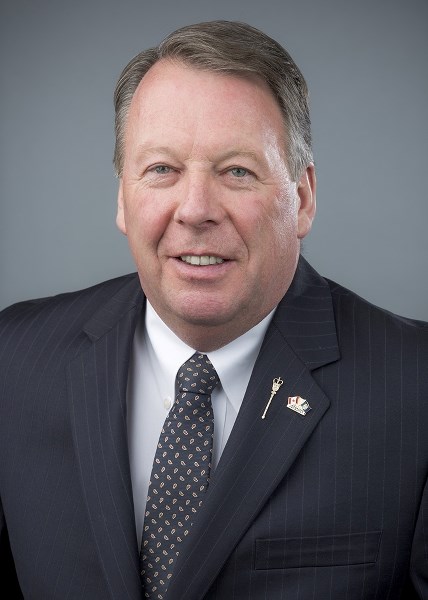Local MLAs are disappointed with approved changes to the electoral boundaries for Alberta.
“I’m very unhappy overall,” said Livingstone-Macleod MLA Pat Stier. “We lost three rural ridings out of this thing provincially.”
Changes to the provincial electoral boundaries received royal assent in December.
According to reports completed by the Alberta Electoral Boundaries Commission, the new boundaries are meant to address population sizes and even the playing field for all ridings. According to the Electoral Boundaries Commission Act, a constituency cannot be more than 25 per cent higher than the average population, and the Highwood riding is currently 18 per cent higher than that threshold due to growth.
Stier said some of the changes don’t add up – they may be the same as far as population levels, but considerations like regional economics or effective representation have been ignored, he said.
Changes for the Foothills region include High River and Blackie moving into the Livingstone-Macleod riding, while Turner Valley and Black Diamond will fall under the Highwood constituency. Livingstone-Macleod also gained Waterton National Park in the south.
“There are a lot of ridings I just don’t agree with how they’ve blended communities together,” said Stier.
In the case of Millarville, which will now be part of the Kananaskis riding, Stier said it isn’t a good fit.
“It’s lunacy,” said Stier. “They have nothing to do with Kananaskis virtually.
“They do most of their business with Calgary, or with Okotoks, or Black Diamond or High River. Why they would separate that off is something I can’t explain.”
Stier said he’d advocated to take the Turner Valley and Priddis areas out of Livingstone-Macleod because they don’t align with Pincher Creek and other municipalities in the riding.
However, he and Highwood MLA Wayne Anderson argued against putting Millarville into Kananaskis, separating Okotoks and High River, and changing the name from Highwood to Okotoks-Sheep River.
One of their requests of the commission was included in the final decision.
“The only change we were successful in getting, frankly, was to get the name Highwood retained,” said Stier. “Wayne and I stood up in the House and were given the opportunity in the House to try to effect change, and the government would only allow during the debate discussions to make changes like names, but they weren’t going to touch any boundary.”
One slight change can have a ripple effect on surrounding ridings, so on the final report no amendments to boundary adjustments were considered, he said. It was unfortunate to have the entire process focused solely on population, said Stier.
He said it seemed as though the purpose was to take away rural constituencies and give cities more representation, he said.
There were three opportunities to suggest amendments as the proposed boundary adjustments came to the table, and he said some small changes were gained.
“But they still didn’t come up with, I think, a very effective alternative that could have been accepted to give rural people a good representation,” said Stier.
He said effective representation is the key, and it’s being lost for rural constituencies like Livingstone-Macleod. It’s difficult for an MLA to be present and available for all constituents when some might be four or five hours away, Stier added.
“If you look at a riding like mine, which expanded tremendously, or like Little Bow, which tremendously expanded, they ignored that rule,” he said. “They didn’t care about effective representation in my view.”
He said there will be some major political changes for Livingstone-Macleod with the addition of High River, which has a population of 13,000 – more than four times as much as most of the municipalities in the riding, he said.
“There will be a different influence going on politically in the new Livingstone-Macleod constituency,” said Stier. “It will be heavily weighted toward High River.”
Having worked in or around High River in various capacities, he said he’s familiar with the municipality and area and its needs, but it will change the dynamic of the riding. For one thing, more time will be directed to High River due to most of the constituency’s population residing there, he said.




